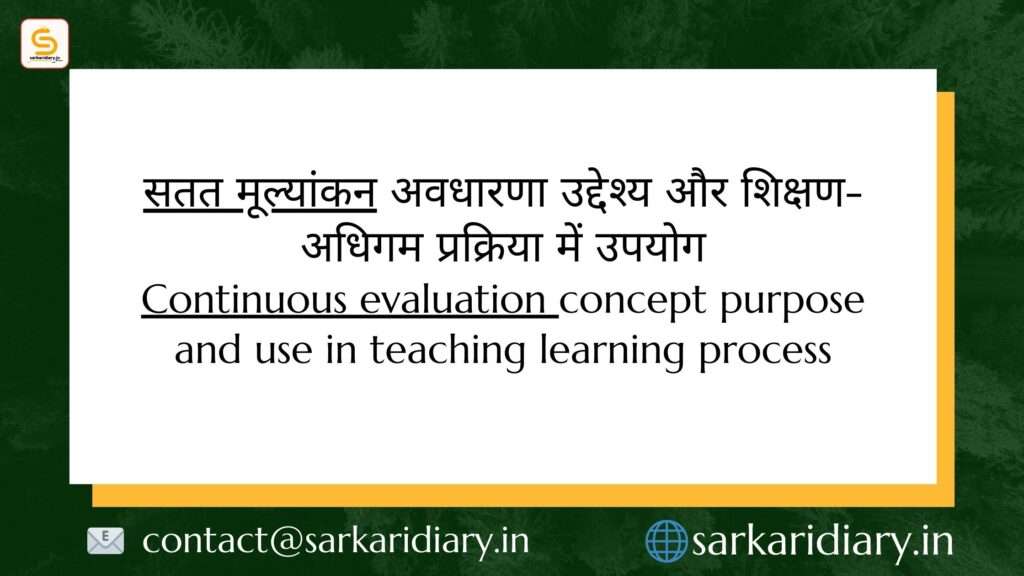Continuous evaluation is a comprehensive and ongoing assessment of a student’s progress throughout their learning journey. It differs from traditional evaluation methods that rely solely on summative assessments, such as final exams. Continuous Evaluation is an integral part of the teaching-learning process, providing valuable feedback to both teachers and students.

Purpose of Continuous Evaluation
Continuous Evaluation aims to:
Assess student learning comprehensively: Continuous Evaluation goes beyond academic performan Continuous Evaluation to evaluate a student’s overall development, including their cognitive, affective, and psychomotor skills.
Monitor student progress: Regular assessments allow teachers to track a student’s learning trajectory, identifying areas of strength and areas that require further support.
Provide feedback for improvement: Continuous Evaluation provides constructive feedback to students, helping them understand their strengths and weaknesses and guiding them towards self-improvement.
Inform teaching strategies: Teachers can use Continuous Evaluation data to adapt their teaching methods and materials to better suit the needs of their students.
ReduContinuous Evaluation stress and anxiety: Continuous Evaluation emphasizes formative assessment, which focuses on providing feedback during the learning proContinuous Evaluationss rather than solely at the end. This reduContinuous Evaluations the pressure on students and promotes a more stress-free learning environment.
Use of Continuous Evaluation in Teaching-Learning ProContinuous Evaluationss
Continuous Evaluation can be integrated into the teaching-learning proContinuous Evaluationss in various ways:
Classroom observations: Teachers can observe students during class activities, noting their participation, engagement, and understanding of conContinuous Evaluationpts.
Assignments and projects: Continuous Evaluation can be embedded within assignments and projects, allowing students to demonstrate their knowledge and skills in different contexts.
Quizzes and tests: Formative quizzes and tests can provide regular feedback on students’ understanding of specific conContinuous Evaluationpts or topics.
Self-assessment and peer review: Continuous Evaluation can incorporate self-assessment and peer review activities, encouraging students to reflect on their own progress and seek feedback from others.
Portfolios: Portfolios can collect a variety of student work, showcasing their progress over time and demonstrating their strengths in different areas.
Benefits of Continuous Evaluation
Continuous Evaluation offers numerous benefits for both teachers and students:
Improved student learning outcomes: Continuous Evaluation provides timely feedback and support, helping students identify and address their learning gaps, leading to better overall understanding.
EnhanContinuous Evaluationd teacher effectiveness: Continuous Evaluation data guides teachers in adapting their teaching strategies and providing individualized support, leading to more effective instruction.
Promoting holistic development: Continuous Evaluation goes beyond academic assessment, fostering students’ overall development, including their social, emotional, and creative skills.
ReduContinuous Evaluationd stress and anxiety: Continuous Evaluation emphasizes formative assessment, reducing the pressure of summative exams and creating a more supportive learning environment.
Promoting self-awareness and responsibility: Continuous Evaluation encourages students to reflect on their own learning, fostering self-awareness and taking responsibility for their academic progress.
In conclusion, continuous evaluation is an essential tool for enhancing the teaching-learning proContinuous Evaluationss. By providing regular, comprehensive feedback, Continuous Evaluation supports both teachers and students in achieving their full potential.